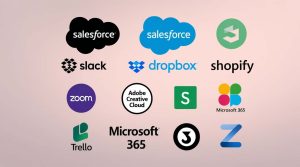Launching a business is a thrilling yet uncertain route. It can be challenging to select the model that most closely fits the vision when there are so many available. Four of the most common startup models will be covered in this blog are SaaS, Marketplace, Freemium, and others. We will discuss their difficulties, how to address these challenges, successful products in the market, and how you can kickstart your own venture.
Introduction
Never before had this much tremendous growth in the development of startups in today’s digital world. Entrepreneurs apply technology to new or existing problems by considering all market needs. Some of the most popular models include SaaS, Marketplace, and Freemium. Each one of the models has its unique characteristics and advantages. There are also some challenges
- SaaS: Customers can obtain software through the Internet in this model, and they don’t have to install or maintain it themselves. The user will pay for the subscription fee generally.
- Marketplace: This model ties the buyers and the sellers together such that the transactions are between them.
- Freemium: A hybrid model in which advanced services are paid for but basic services are provided for free.
Understanding these categories is crucial for aspiring entrepreneurs looking to carve out their niche (unique product/service) in the competitive startup ecosystem.
Problems Associated with SaaS, MarketPlace, Freemium Start-Up Models:
1. Problems of SaaS Models
Customer Acquisition: Customer Acquisition can be costly.
Subscription Rate: Retaining the customers is the most essential; high churn rates can jeopardize the revenues.
Infrastructure Costs: Handling the servers and the support system increase pressure on the finances.
2. Issues in the Marketplace
Supply and Demand: Varying supply with demand requires a continuous flow of both buyers and sellers.
Issues of Trust: The clients need to be safe about their transactions with others.
Competition: Daily there are number of products/services coming in the market, Standing out in a crowd is very hard.
3. Freemium Problem:
Conversion Rates: Getting free users to convert into paying customers is tough.
Resource Drain: Supporting free users can drain resources without guaranteed returns.
Undervalued Service: Users underestimate a service if everything is given away.
To navigate these challenges successfully, entrepreneurs must take a strategic approach:
For SaaS, the imperative task is to focus upon user onboarding as well as customer support for decreasing turnover. A robust marketing strategy including content marketing and social proof is necessary for acquisition.
In a Marketplace, establishing trust with user reviews and secure payment systems is necessary.
Using data analytics to monitor supply and demand trends also helps the system maintain balance.
For Freemium, only sufficient value in the free tier should be provided to attract users but still leave room for premium. Good communication on the benefits of an upgraded version can also boost the rate of conversion.
Successful SaaS, Marketplace, Freemium Products in the Market
There are many products in each of the following categories that have successfully leveraged such models:

SAAS Products
1. Salesforce
Success: Salesforce pioneered cloud-based CRM (Customer Relationship Management), providing scalable solutions for businesses of all sizes. It dominates the CRM market by offering highly customizable and integrated services.
2. Slack
Success: Slack introduced the new generation of tools for real-time working and communication through integration with other third-party applications and software. It has millions of subscribers worldwide and is an important component of most teams
3. Dropbox
Success: Dropbox offers solutions in cloud storage as it saves, shares, and synchronizes files in the most convenient manner possible. Its successful integration of cross-platforms from all devices made it even more of a primary use in both personal and corporate careers.
4. HubSpot
Success: HubSpot is a powerful platform for inbound marketing, sales, and customer support. A set of tools with a user-friendly layout that helped businesses attract in, interact with, and satisfying customers was the key to their success.
5. Zoom
Success: Zoom simply became the essential video conferencing tool during the COVID-19 pandemic, but its ease of use, reliability, and scalability facilitated fast growth and widespread adaptation.
6. Shopify
Success: Shopify offers ecommerce solutions to businesses across sizes. Its success lies in allowing these entrepreneurs to develop and run online stores with easy-to-use tools.
7. Adobe Creative Cloud
Success: With Creative Cloud, Adobe moved from a perpetual software license model to a subscription model. With access to Adobe’s Creative Cloud Suite, this SaaS subscription product is important to designers and creatives.
8. Microsoft 365
Success: Microsoft’s SaaS-based offering turned its Office suite into a cloud-based solution. Its subscription model, collaboration tools and the storage in the cloud have have helped it retain millions of business customers.
9. Trello
Success: Trello offers a simple, flexible project management tool by using a kanban-style board. Its ease of use and visual nature has made it popular among teams for task management and teamwork.
10. Zendesk
Success: Zendesk offers customer service and engagement tools. Its cloud-based platform makes it is easy for businesses to manage customer interactions across many channels, which is a milestone for its growth.
Marketplace Products:
1. Amazon
Success: Amazon’s marketplace allows third-party sellers access to millions of customers worldwide. Its huge infrastructure, logistics network, and customer trust make its the world’s largest online marketplace.
2. eBay
Success: eBay was one of the very first successful online marketplaces. It allows its users to buy and sell items from narrow categories to broader categories like electronics or sporting goods. Its auction-style format and broad product categories contributed to its early success.
3. Airbnb
Success: Airbnb transformed the hospitality industry by giving local people the opportunity to rent out home or rooms for travelers. The direct communication between travelers / tourists with local people has eliminated traditional hotel chains, middlemen and led to massive global growth.
4. Uber
Success: Uber revolutionized the transportation market by connecting drivers with passengers by creating the marketplace. Its scalable business model and phenomenal global expansion made Uber one of the leaders in the ride-sharing market.
5. Etsy
Success: Etsy is a platform specialized in handmade and vintage items, creating a market for artisans and small businesses owners selling to consumers. This unique marketplace created loyal customer bases for such small businesses.
6. Upwork
Success: Upwork connects freelancers with clients/customers across the world, across numerous sectors. Its algorithm matches skilled professionals with remote job opportunities.
Its ability to connect skilled professionals with required people who are in need of that particular service remotely made it a top platform in the gig economy, gig economy means doing part time work in free time besides doing job in job timings.
7. Alibaba
Success: Alibaba is an online marketplace with vast connections between Chinese manufacturers and customers all over the world. It has been very successful on a global scale concerning B2B transactions and e-commerce.
8. Fiverr
Success: Fiverr is the platform that lets freelancers offer services at any rate starting at $5. Its simple and scalable model as well as offers diversity has made it popular among freelancers and small businesses.
9. TaskRabbit
Success: TaskRabbit connects people who have tasks to be done with skilled people Through it is an online registration for service its services are offered offline at user location. Its on-demand services model, includes moving, cleaning, and assembling furniture, has made it a success.
10. Grubhub
Success: Grubhub started restaurant delivery options, making it easy for users to order food. Its marketplace model helped restaurants reach more customers and played an important role in expanding the online food delivery industry.
Freemium Products:

1. Spotify
Success: Spotify offers free advertisement-based music streaming while charging other premium services such as removing advertisements, improving the quality of the sound and allowing the user to download music for offline listening. Its freemium model used by more than 500 million users worldwide.
2. Dropbox
Success: Dropbox has offered free limited cloud storage and you can upgrade for more storage, also advanced features. Its user friendliness of free tier helped Dropbox to reach millions of users.
3. Evernote
Success: Evernote’s freemium model allows users to have free basic note-taking features, while paid features give more space and wider functionalities. A simple but effective product attracted a huge users’ base.
4. LinkedIn
Success: LinkedIn offers the basic professional networking service free, and paid features include InMail, profile views, and improved job search engines, etc. This has been the fuel for LinkedIn’s revenue growth.
5. Canva
Success: Canva has given free access to almost everything – from graphic design, photo editing and much more – and premium templates and assets are only available on paid version. The user-friendly interface has attracted millions of non-designers to the platform.
6. Mailchimp
Success: Mailchimp offers free email marketing services with limited features. More advanced tools and analyses require a paid plan, which contributes to its popularity among small businesses and startups.
7. Zoom
Success: Zoom’s freemium model lets a user make free video calls with time limits while paid users get to enjoy more added features such as lengthy meetings and webinars. A freemium model made huge growth for Zoom, particularly during the pandemic.
8. Trello
Success: Trello is free for project management, although their paid plans offer features such as automation and superior integrations. The fluent UI and its collaborative features made it very popular among teams.
9. Slack
Success: Slack’s freemium model includes core messaging features for free, but unlimited integrations and an extended message history are in paid plans. This approach made Slack outshine other competitors in the workplace.
10. Hootsuite
Success: By offering free services and paid plans that incorporate features such as scheduling, analytics, and team management, it has gained an edge and turned to be one of the popular social media management platforms in use.
The Success Formula: Innovative Business Models, Robust Technology, and Acquiring the Right Users
How to Start Your Own Startup Model
Starting your own venture requires proper planning and execution It involves the following steps:
1. Identify Your Niche:
Identify market needs and gaps. Discover what your target audience needs and where they are unsatisfied.
2. Select Your Model:
Determine what will best fit your vision, including the gaps in the market- whether SaaS, Marketplace, Freemium, or any other model.
3. Developing Your Product
Develop an MVP that addresses core functionalities. User experience will be your primary focus when attracting early adopters.
4. Marketing Strategy:
You can have 360-degree marketing with social media, content marketing, and SEO help to reach the target audience.
5. Feedback Loop:
Create pathways for feedback from the users so that you can be upto date and correct your product/service based on real-world use.
6. Scale Up:
Once you gain trust/ acceptance in the market; it’s time to scale up the operations with maintaining quality delivery of service.
Conclusion
Exploring a startup model such as SaaS, Marketplace, and Freemium reveals both opportunities and difficulties. Understanding some of the difficulties associated with each model through effective strategies to be implemented could position the budding entrepreneur for success. Whether you launch a SaaS product or create a marketplace platform, it all comes down to identifying your niche and providing value to your users consistently. With this and the right approach, any individual can start this thrilling journey of entrepreneurship





